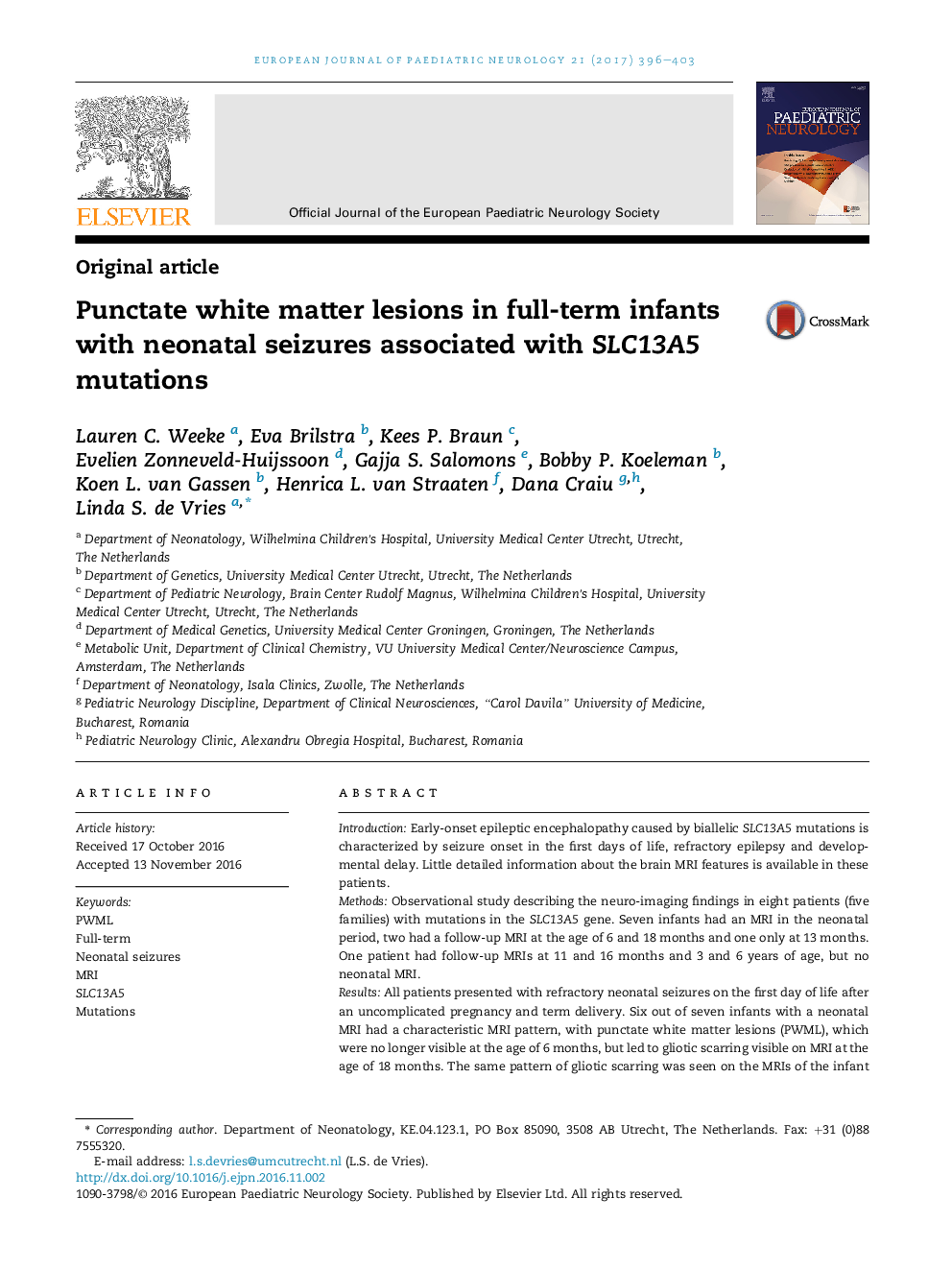| Article ID | Journal | Published Year | Pages | File Type |
|---|---|---|---|---|
| 5628964 | European Journal of Paediatric Neurology | 2017 | 8 Pages |
â¢SLC13A5 mutations are associated with punctate white matter lesions on neonatal MRI.â¢These lesions are best seen on neonatal DWI.â¢These lesions are no longer visible at 6 months, but lead to gliotic scarring visible on MRI at 18 months and beyond.
IntroductionEarly-onset epileptic encephalopathy caused by biallelic SLC13A5 mutations is characterized by seizure onset in the first days of life, refractory epilepsy and developmental delay. Little detailed information about the brain MRI features is available in these patients.MethodsObservational study describing the neuro-imaging findings in eight patients (five families) with mutations in the SLC13A5 gene. Seven infants had an MRI in the neonatal period, two had a follow-up MRI at the age of 6 and 18 months and one only at 13 months. One patient had follow-up MRIs at 11 and 16 months and 3 and 6 years of age, but no neonatal MRI.ResultsAll patients presented with refractory neonatal seizures on the first day of life after an uncomplicated pregnancy and term delivery. Six out of seven infants with a neonatal MRI had a characteristic MRI pattern, with punctate white matter lesions (PWML), which were no longer visible at the age of 6 months, but led to gliotic scarring visible on MRI at the age of 18 months. The same pattern of gliotic scarring was seen on the MRIs of the infant without a neonatal scan. One infant had signal abnormalities in the white matter suspected of PWML on T2WI, but these could not be confirmed on other sequences.ConclusionIn infants presenting with therapy resistant seizures in the first days after birth, without a clear history of hypoxic-ischemic encephalopathy, but with PWML on their neonatal MRI, a diagnosis of SCL13A5 related epileptic encephalopathy should be considered.
